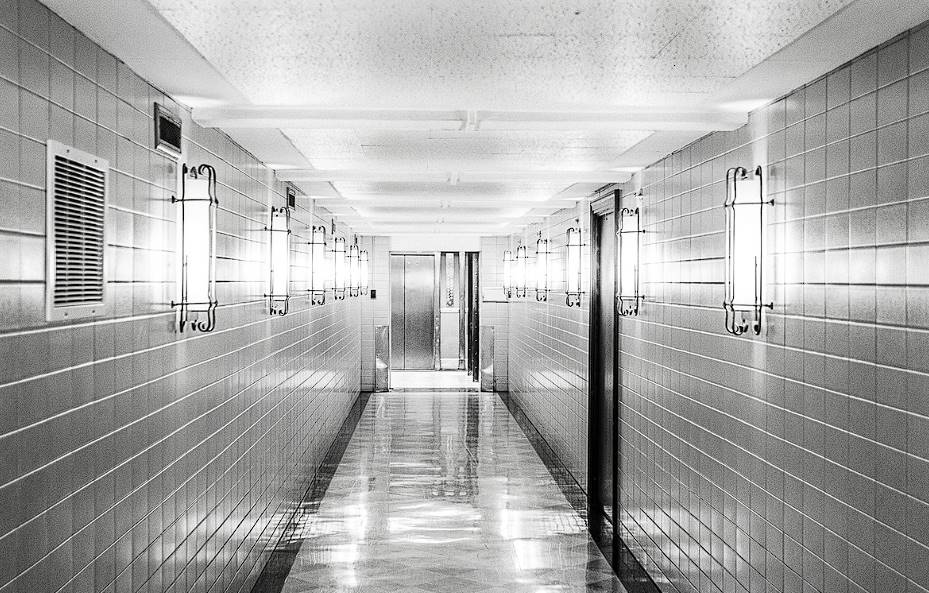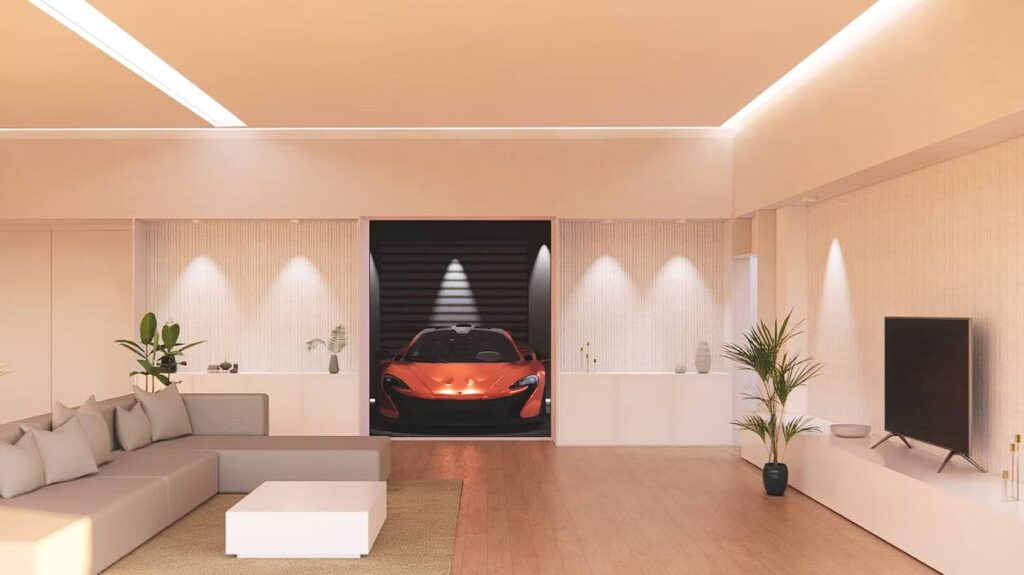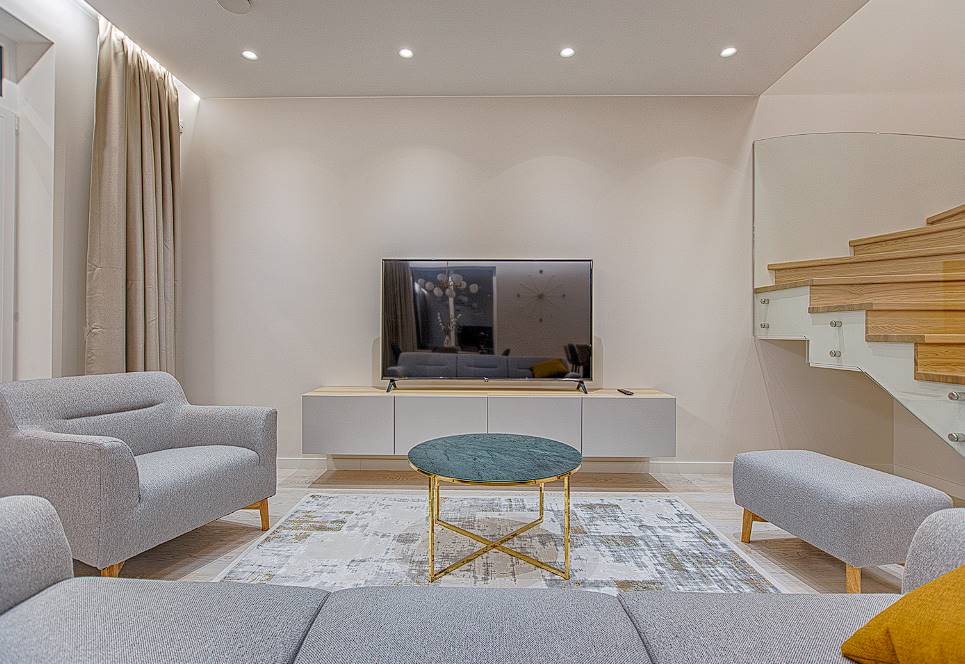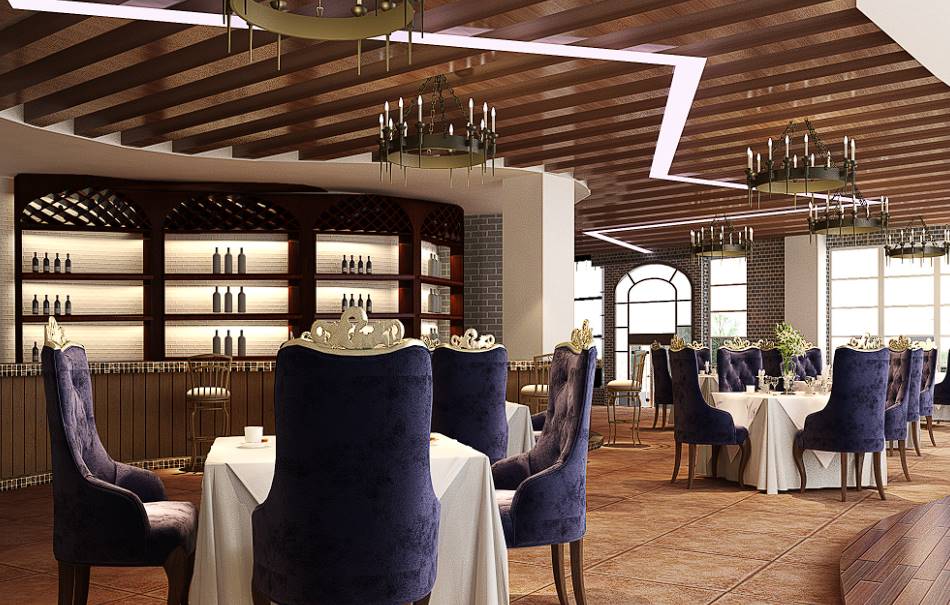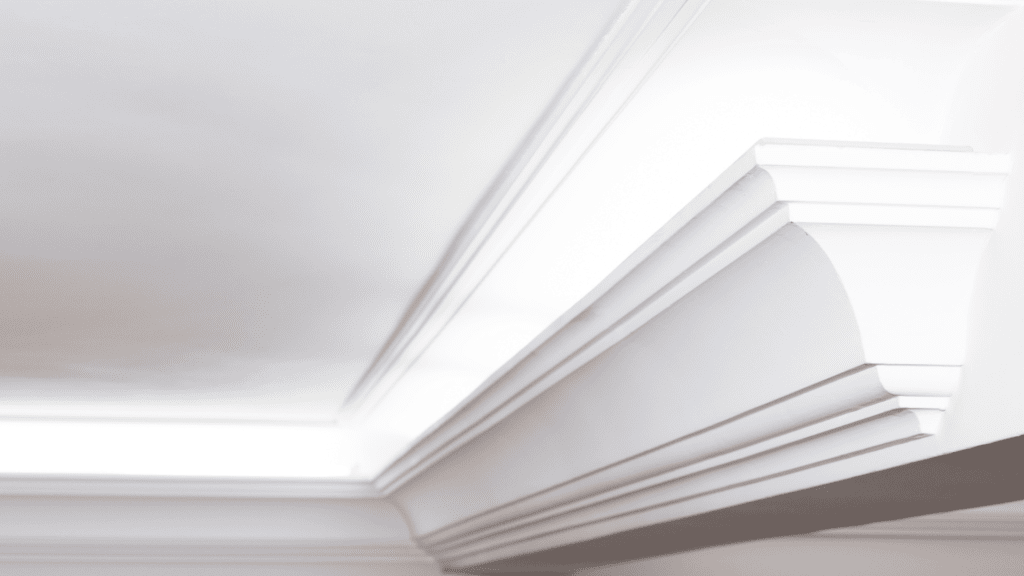Many homeowners need to figure out where to begin or what to prioritise when selecting ceiling tile materials. The problem lies in the fact that consumers need more education about the differences between the various ceiling tile materials available. People have a hard time making an educated choice because they are only sometimes aware of the pros and cons of each substance.
Here, we'll examine the pros and cons of the most common materials used to make ceiling tiles. We provide thorough information and insightful analysis to help you choose the right item. We have what you need, whether high levels of sound insulation, resistance to fire and wear, long service life, or just plain good looks.
In the following sections, we'll discuss the various ceiling tile materials in depth so that you can make a well-informed choice. Use this opportunity to pick the right ceiling tile material. Read the complete article to find out.
Common Types Of Ceiling Tile Materials
A wide range of ceiling tile options are available, each with its own aesthetic and functional characteristics. Metal, mineral fibre, and plasterboard are ceiling tiles' most often used materials. In addition, insulated and specialised ceiling tiles can be chosen.
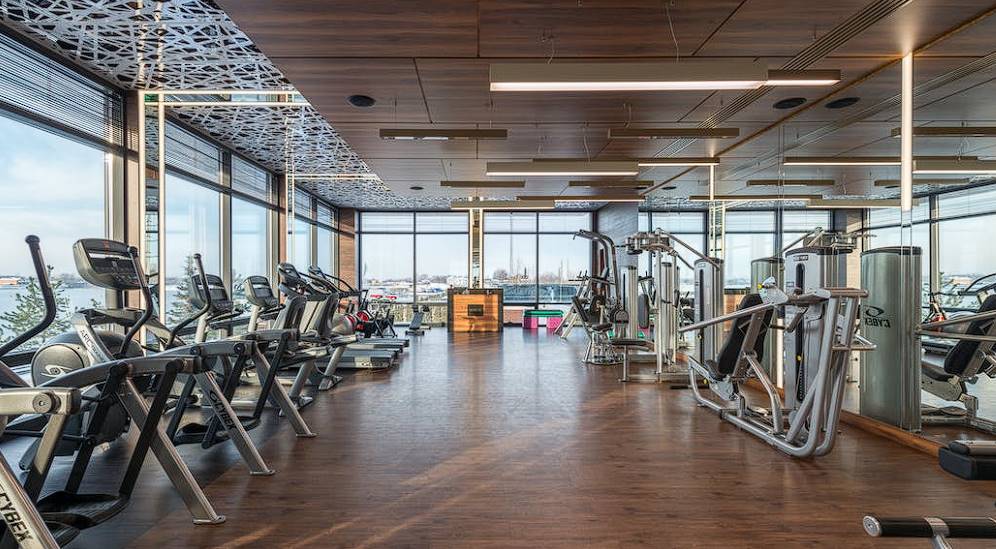
Mineral Fibre
The materials used to create Mineral Fibre tiles span the spectrum from natural to processed to recycled. Tiles can be made from various materials, including recycled newspaper, clay, perlite, starch, and fibreglass, in varying proportions to optimise their specific properties.
Those with a more porous substance are better at blocking noise, while those with a firmer structure absorb it more readily. A wide variety of mineral fibre tile options are available, each with its own performance benefits and aesthetic qualities. Ceiling tiles made of mineral fibre are the industry standard and can be obtained anywhere. Tiles made of mineral fibre are very cost-effective.
Importance
- Acoustic Performance: Sound-absorbing mineral fibre ceiling tiles are popular. They limit noise transmission, making them essential for producing calmer commercial, residential, and institutional spaces.
- Thermal Insulation: Mineral fibre ceiling tiles insulate too. They reduce heat movement between building zones, helping maintain a pleasant temperature and saving energy on heating or cooling.
- Fire Resistance: Fire-resistant mineral fibre ceiling tiles are common. In crises, they can halt fire spread and give evacuation time. In public and commercial spaces, they're crucial safety features.
- Aesthetics and Design: Mineral fibre ceiling tiles can be designed, textured, and finished in many ways. They can improve a space's look and architectural adaptability. These tiles can create ceiling designs that match the interior decor.
- Moisture Resistance: Moisture-resistant mineral fibre ceiling tiles are common. They can be installed in damp locations, including kitchens, bathrooms, etc. Mould and mildew can be prevented by moisture-resistant tiles, improving indoor air quality.
- Durability and Longevity: Mineral fibre ceiling tiles are durable and long-lasting. Over time, they don't sag, twist, or discolour. This guarantees that the ceiling retains its visual appeal and functional performance for a long time, avoiding the need for regular replacements.
- Easy Installation and Maintenance: Whether suspended or directly attached, mineral fibre ceiling tiles are easy to install. They require little cleaning and upkeep.
Plasterboard Tiles
Ceiling tiles made from gypsum plasterboard with a vinyl face are just one of the many options from Plasterer Melbourne. These tiles are ideal for high-traffic locations where cleanliness is paramount, such as kitchens, food preparation facilities, and other cleanrooms. Please look at our premium plasterboard tiles to find the perfect ceiling finish for your home today.
Importance
- Aesthetics: Plasterboard tiles enhance a room's appearance. They smooth the ceiling and hide faults.
- Concealment of services: Electrical wiring, plumbing, ventilation ducts, and other utilities above the ceiling are commonly hidden by plasterboard tiles. By disguising these components, they make the area look sleek and organised.
- Acoustic control: A room's acoustics can be improved with plasterboard tiles. Their sound-absorbing characteristics diminish noise reverberation and echo, making the atmosphere quieter and more comfortable. In workplaces, classrooms, and conference rooms, voice clarity and noise reduction are vital.
- Thermal insulation: Thermal insulation is possible with plasterboard tiles. By minimising heat passage via the ceiling, they manage room temperature. Energy efficiency and home comfort can benefit from this.
- Fire resistance: Plasterboard tiles are made of fire-resistant materials like gypsum. They protect the structure and provide fire victims more time to escape.
- Easy installation and maintenance: Lightweight plasterboard tiles are straightforward to install. They may be connected to the ceiling or a grid system rapidly. Individual tiles can be replaced if repairs or alterations are needed.
Metal Ceiling Tiles
Metal ceiling tiles and grid systems from trusted brands like SAS International and Armstrong Ceilings are durable, cutting-edge, and of great value. We have various metal tiles that can be installed using either a clip-in or a lay-in approach. Metal ceiling tiles might be tricky to spot, so please be aware of that. Don't hesitate to contact our experienced staff for additional guidance to ensure a smooth transaction.
Importance
- Durability: Metal ceiling tiles are tough. They resist fire, pests, and dampness. This durability keeps ceiling tiles looking good over time.
- Aesthetic appeal: Metal ceiling tiles are available in several styles and finishes to meet different architectural and interior design preferences. They can enhance any business, home, or public place with elegance and sophistication.
- Versatility: Design options are plentiful with metal ceiling tiles. They can be customised to match architectural requirements and utilised in workplaces, restaurants, hotels, retail businesses, and residences. Metal tiles may be easily moulded and fashioned into numerous patterns and sizes, making them suited for traditional and contemporary designs.
- Acoustic performance: Acoustics can be improved with metal ceiling tiles. In conference rooms, theatres, and recording studios, metal tiles with sound-absorbing materials or perforations can improve sound management and lessen noise reverberation.
- Maintenance and hygiene: Metal ceiling tiles clean easily. They're stain-resistant and easy to clean. Metal tiles also resist mould and mildew growth, making them healthier and cleaner than ceiling materials.
- Sustainability: Aluminium and steel ceiling tiles are recyclable. They may be recycled, making them eco-friendly. Metal tiles last long and reduce trash.
Insulated Tiles
Some of the best-insulated ceiling tile producers in the world supply us with their products. These respected manufacturers produce tiles with a delicate texture and insulating characteristics from stone or glass wool. Please browse our selection of insulating ceiling tiles that can help you achieve your ideal working environment, whether regarding sound absorption, fire safety, or energy savings.
Importance
- Thermal insulation: Insulated tiles restrict heat transfer between a building's interior and exterior. They block heat conduction through the ceiling. In hot weather, this keeps the indoor environment cooler, and in cold weather, warmer. As a result, heating and cooling systems are used less, saving energy and money.
- Energy efficiency: Insulated tiles improve energy efficiency by minimising heat transfer. Insulation reduces summer heat gain and winter heat loss, lowering cooling and heating needs. This increases sustainability and reduces carbon emissions.
- Comfortable indoor environment: Insulated tiles preserve building temperature. They reduce hot and cold spots for a comfortable home or office. Insulation lowers noise transmission, making indoor spaces quieter and more serene.
- Condensation control: Insulated tiles can help control condensation issues in the ceiling. Condensation, mould, and mildew growth can result from warm, moist air hitting a cooler surface. Insulation prevents warm air from reaching the cooler surface, lowering condensation danger.
- Energy cost savings: Insulated ceiling tiles save long-term energy costs. Insulation lowers energy consumption by lowering the need for excessive heating or cooling. This can save on utility expenditures over time.
Coloured Ceiling Tiles
The best range of suspended ceiling tiles can be found at Plasterer Melbourne. The classic white shade is still my favourite. Having a glossy, contemporary appearance is fantastic for reflecting light. Are you in search of a change of pace? For individuals with specific requirements or who like to create a more striking aesthetic statement, we offer an array of coloured speciality ceiling tiles.
Importance
- Aesthetics: Coloured ceiling tiles provide visual appeal and vibrancy to a room. They can enhance a room's decor and concept.
- Mood and Ambiance: Different colours can generate different feelings. Cool colours like blue or green can soothe and relax a room, while warm colours like red or orange can energise and warm it. Choosing the right ceiling tiles can change a room's mood.
- Wayfinding and Orientation: Coloured ceiling tiles can aid in navigating large business facilities. Different colours make it easy to traverse and find specific locations in the building.
- Functional Differentiation: Coloured ceiling tiles help distinguish functional zones in a place. Workstations, meeting rooms, and communal areas in an office could use different colours. This can improve organisation and space usage.
- Accessibility and Inclusivity: Visually impaired people may benefit from ceiling tile colours. High-contrast colours or patterns assist visually impaired people in navigating. Coloured tiles can help cognitively disabled people understand their surroundings.
What Should We Consider When Choosing A Ceiling Design?
Not every ceiling style is suited for every room, however how impressive it may be. For instance, there are better places for vaulted ceilings than basements. A vaulted ceiling is out of the question because the height of the ceiling is constrained by the floor above. Since drop ceilings reduce the room's height even further, they are rarely installed in spaces with extremely low ceilings.
The ability to see the final product and make informed judgements is greatly aided by familiarity with the many ceiling options. Let's compare many popular ceiling styles.
Flat or Conventional Ceilings
Most people have only ever seen standard drop ceilings. Most contemporary homes have flat ceilings. Because of their low cost and simple implementation, programmers frequently use them.
In addition to being cost-effective, they are also simple to care for and come in infinite colours and textures. Considering that it's a simple enough ceiling design for DIY enthusiasts to accomplish on their own, it is easy to see why this look has endured for so long.
Traditional ceilings might be uninteresting. They need to add height and visual appeal to the area beyond a dash of minor ceiling texture. Additionally, if you ever decide you want to alter the texture, you'll be in for a dirty job. Explore your options for ceiling textures before settling on one, and go with something you can see yourself living with for years.
Wood Ceilings
We can only talk about ceilings if we bring up wood because it is adaptable. It's both modern and timeless, with no dull spots. With the abundance of wood species available today, traditional ideas of what a wood ceiling should look like have been thrown out the window.
Wooden ceilings don't reflect as much light as other materials do. Thus, they help create a cosy atmosphere. They add to the homey atmosphere as well. Wood's natural warmth is unrivalled after proper finishing.
Wood has many positive qualities, but it also has some drawbacks. Wooden ceilings might make accessing and repairing wiring and plumbing behind the wall more difficult. Unlike drywall, holes cannot be repaired by cutting and patching. As a result, even seemingly easy chores can become challenging when you need to salvage your materials at a reasonable price.
Exposed Ceilings
With their rustic yet modern industrial aesthetic, exposed ceilings have been increasingly popular in recent years. Many developers must finish the ceiling when converting older structures into modern condos and offices. It's a fantastic, up-to-date ceiling design opens up the ceiling and adds energy with its parallel lines.
Taking this path in historic structures is a terrific method to bridge the gap between the past and the present. The building's use and transformation over the years are plain to see. Showing off the various components that give the machine power will make your interior designer extremely happy.
There are, however, drawbacks to this. Exposed ceilings increase the room's height, which decreases its thermal efficiency. Metal and concrete are common building materials for these structures because of their extreme hardness and density. These harsh, reflecting surfaces amplify the sound already present in the environment. Decorate using plenty of soft, absorbent fabrics to reduce noise levels if you go for exposed ceilings.
Drop or Suspended Ceilings
Many ugly and noisy services in commercial buildings are hidden by suspended ceilings, making this ceiling a popular option. Drop ceilings consist of a suspended grid with panels attached to each piece.
We can isolate our guests from the overhead machinery by suspending soundproof ceiling panels. By regulating the air temperature exclusively, insulated panels allow users to reduce their heating and cooling bills significantly. In addition to simplifying maintenance, these systems eliminate the need for patching and painting above-ceiling areas by providing easy access via removable panels.
However, only some are interested in taking on the challenge of installing a drop ceiling themselves. Thus, they can be on the pricier end of the range. This is particularly true if you choose premium panels manufactured from durable materials. However, your energy savings may outweigh the initial investment in these ceiling materials.
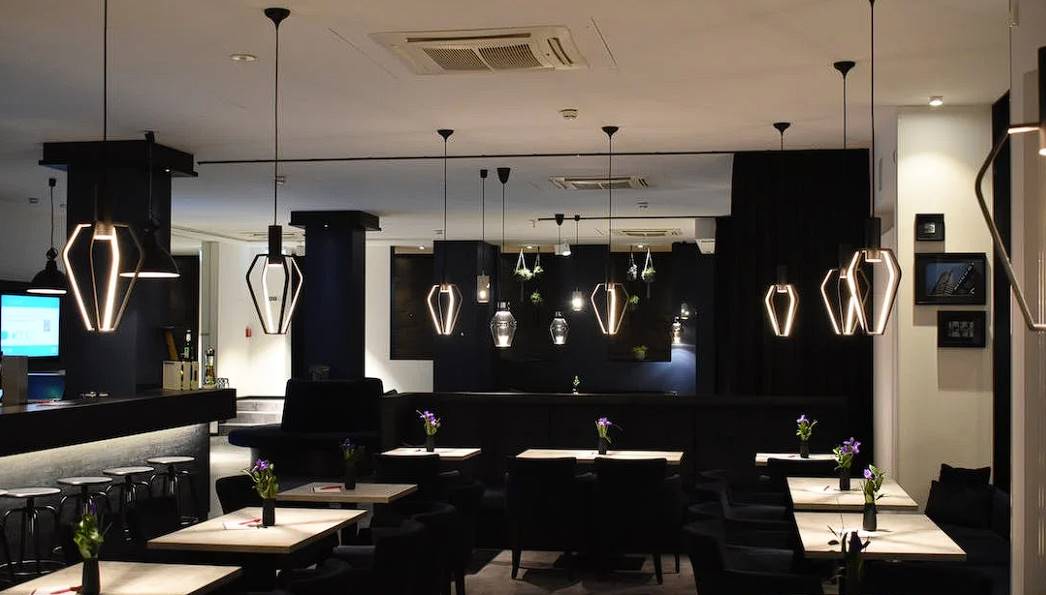
Vaulted Or Cathedral Ceilings
The addition of a vaulted ceiling can make a room stand out. Vault ceilings come in various shapes and configurations, but they all feature two planes that rise at an angle from the top of the walls to meet in the middle.
The vast vertical space created by vaulted ceilings gives the area a spacious and airy ambience. Large windows on one or both of the taller walls are a popular addition to homes with vaulted ceilings, providing unparalleled natural light.
However, they are not problem-free. Overhead lighting that is, ten feet or more above the ground, is more difficult to clean and maintain for several reasons. You may need to hire a professional to change your lightbulbs and clean your chandeliers unless you have a long ladder and are confident working at great heights.
This ceiling style could be more energy efficient, so keep that in mind. Consider this ceiling style's energy efficiency. Your heating system must work more to maintain a reasonable ground temperature due to the high peak.
Tray Ceilings
Tray ceilings are an option to make your ceiling look more elaborate but only have a little headroom. They resemble a normal flat ceiling in almost every way except for a little indentation in the centre. In most cases, the raised section is 6-12 inches higher than the surrounding area and located dead centre in the room. The completed item looks like a tray.
When there isn't much vertical space, this style of ceiling is an excellent solution. In the design process, you can experiment with various moulding materials and recessed ceiling texture options for a dramatic effect. Complete the transformation by installing new lighting fixtures in the room.
However, tray ceilings are only sometimes a good option. A tray ceiling might make the room appear even smaller if the ceilings were very low, to begin with. If you are doubtful, it is best to get advice from an expert.
Coffered Ceilings
Coffered ceilings are the best option to add sophistication to a room with a ceiling design that creates a three-dimensional pattern. Coffered ceilings resemble tray ceilings extremely closely but feature numerous recessed portions instead of just one.
Many of the advantages and disadvantages of tray ceilings also apply to them, but the designs you can make with them are far more complex. Beams that can go horizontal, vertical, or any other direction make it possible to produce the indented portions. They make the room's lighting more dramatic and allow for the creation of unique textures. Your audio problems will be solved as well. You can reduce the room's echo and reverberation by installing acoustical coffered ceiling panels in the cutout.
Conclusion
In addition to the standard options of metal, mineral fibre, and plasterboard, insulated and specialist ceiling tiles are also available. Mineral fibre tiles are standard on the market, and you can find them just about anyplace. They're cheap for good reason. The content focuses on the many ceiling tile options offered by Plasterer Melbourne.
As well as generating quieter business, residential, and institutional areas, thermal insulation and fire resistance are two other common uses for ceiling tiles made from mineral fibre. Metal ceiling tiles are long-lasting, modern, and inexpensive; plasterboard tiles are best where cleanliness is a top priority. Insulated ceiling tiles come in a wide variety of designs, colours, and textures to accommodate any aesthetic requirement. If you have special needs or just want to make a bolder design statement, you can order coloured specialist ceiling tiles. Consider the potential impact of a ceiling design before committing to it.
Because of the limitations imposed by the floor above, vaulted ceilings are better suited for certain rooms than others. Spaces with exceptionally low ceilings are not good candidates for drop ceilings.
Content Summary
- Consumers lack education about different ceiling tile materials.
- Understanding the pros and cons helps in making an informed choice.
- Sound insulation is important for calmer spaces.
- Mineral fibre tiles are cost-effective and widely available.
- Mineral fibre tiles offer acoustic performance and thermal insulation.
- They are fire-resistant and enhance aesthetics and design.
- Moisture-resistant tiles improve indoor air quality.
- Mineral fibre tiles are durable, long-lasting, and easy to install.
- Plasterboard tiles enhance a room's appearance and conceal services.
- They improve acoustics and provide thermal insulation.
- Plasterboard tiles are fire-resistant and easy to install and maintain.
- Metal ceiling tiles are durable, versatile, and offer aesthetic appeal.
- They improve acoustics and are easy to clean and maintain.
- Metal tiles are sustainable and recyclable.
- Insulated tiles offer thermal insulation and energy efficiency.
- They create a comfortable indoor environment and control condensation.
- Insulated tiles result in energy cost savings.
- Coloured ceiling tiles enhance aesthetics and create a desired mood.
- They aid in wayfinding and functional differentiation.
- Coloured tiles promote accessibility and inclusivity.
- Choosing the right ceiling design depends on the room and its constraints.
- Flat or conventional ceilings are cost-effective and easy to maintain.
- Wood ceilings create a cosy and warm atmosphere.
- Exposed ceilings have a rustic and modern industrial aesthetic.
- Drop or suspended ceilings hide services and provide easy access.
- Vaulted or cathedral ceilings create a spacious and airy ambience.
- Tray ceilings add elegance and work well in rooms with limited headroom.
- Coffered ceilings add sophistication and create three-dimensional patterns.
- They offer unique lighting and solve audio problems.
- Consulting an expert is recommended when in doubt about ceiling design choices.
Frequently Asked Questions
The most common type of ceiling tile material is mineral fibre. It is widely used due to its excellent sound absorption properties, durability, and availability in various designs and textures.
Ceiling tile installation can be done as a DIY project, depending on your level of skill and comfort with construction work. However, for complex installations or if you are unsure about the process, it is recommended to seek professional help to ensure a proper and safe installation.
Certain types of ceiling tiles, such as those with thermal insulation properties, can contribute to energy efficiency. These tiles help in reducing heat transfer between the ceiling and the room, potentially lowering heating and cooling costs.
Yes, there are ceiling tiles designed to resist moisture and mold growth. Fiberglass and certain mineral fiber tiles have inherent moisture-resistant properties, making them suitable for environments with higher humidity levels, such as bathrooms or swimming pool areas.
The lifespan of ceiling tiles varies depending on the material and the conditions in which they are installed. However, most high-quality ceiling tiles can last for 10 to 20 years or more with proper maintenance and care.

